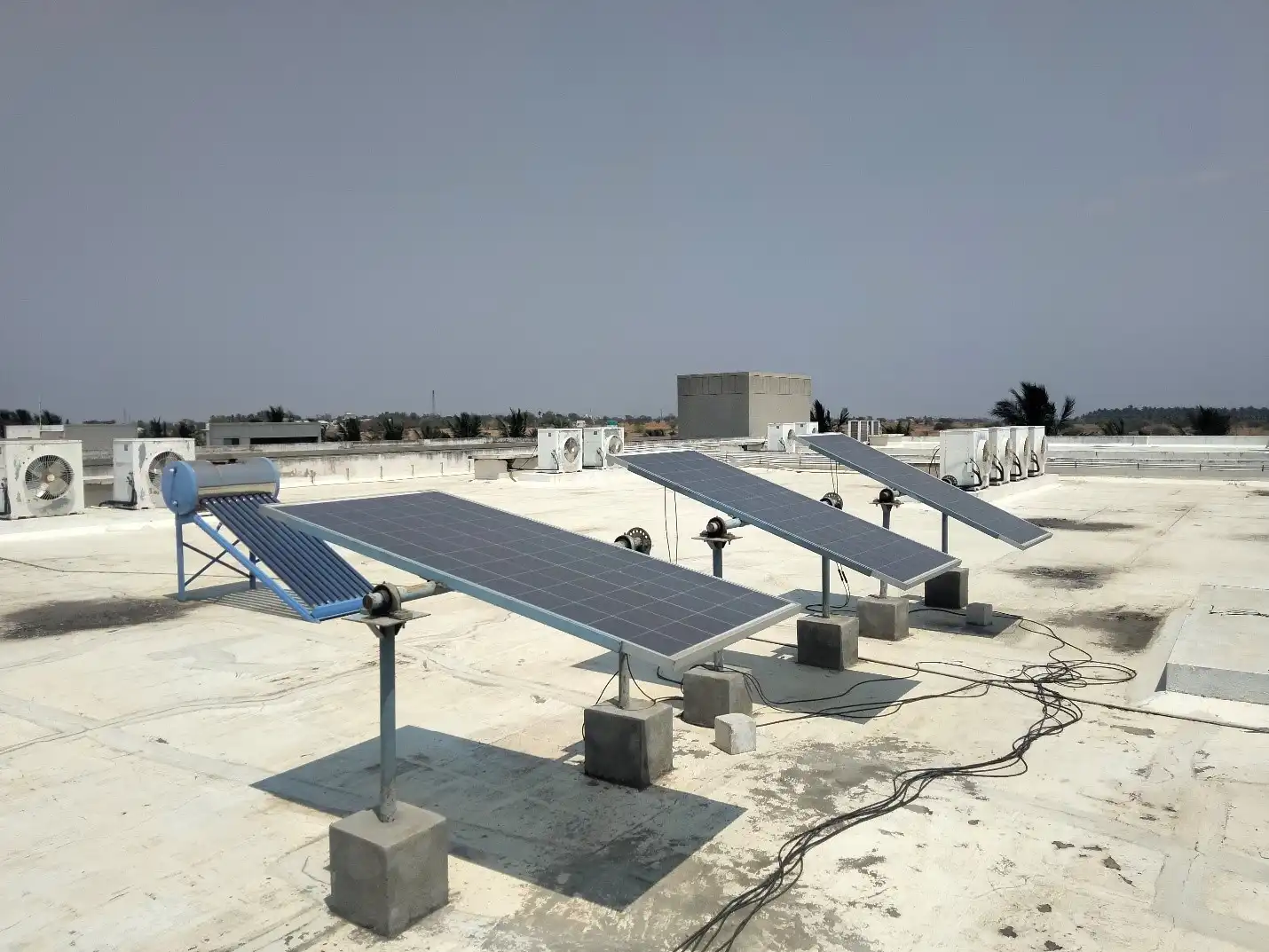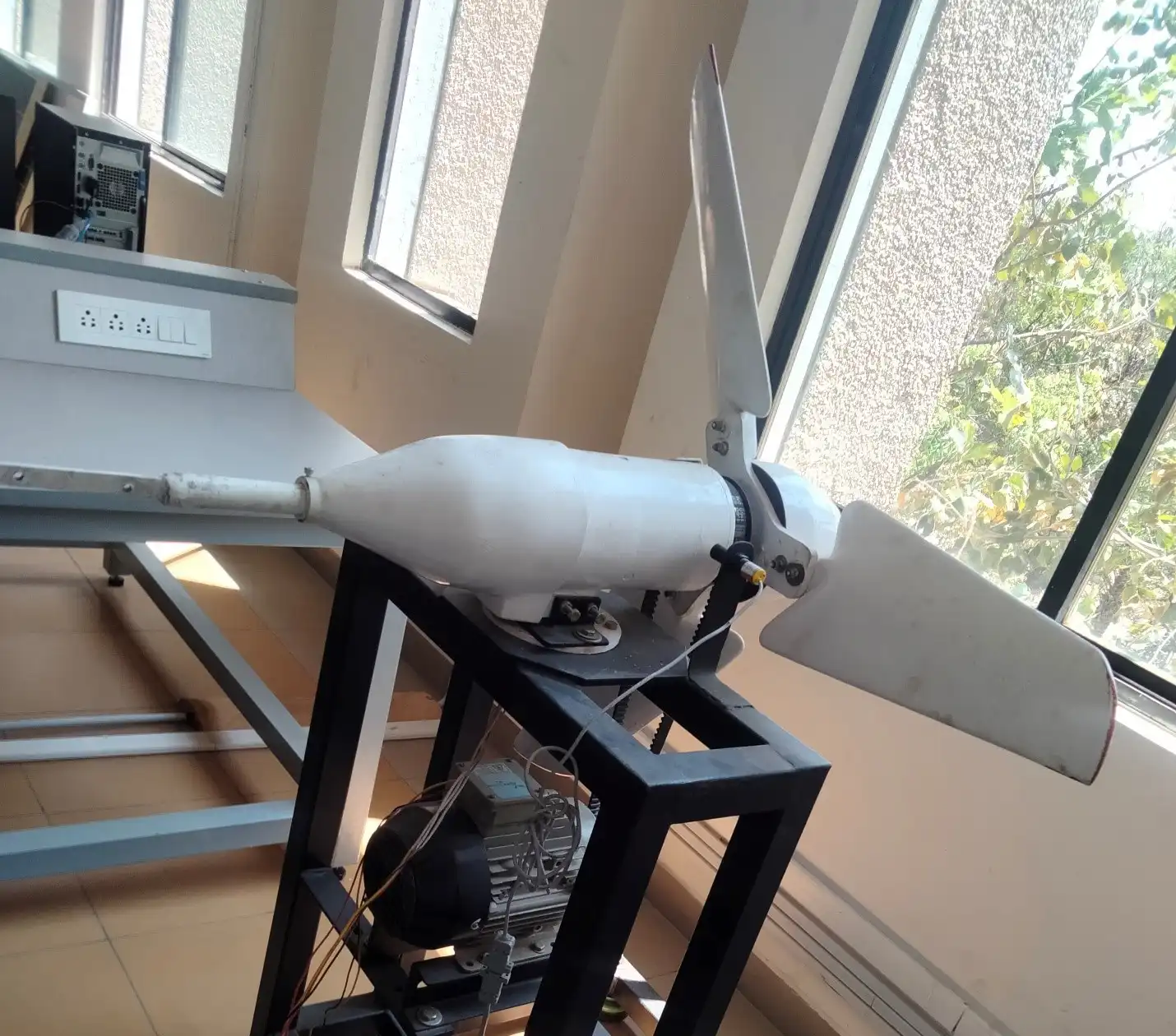A renewable energy laboratory is a facility where experiments and research are conducted to develop and improve renewable energy technologies. The laboratory typically includes equipment and instruments to test, measure, and analyze the performance of renewable energy systems.
The laboratory may focus on a particular type of renewable energy, such as solar photovoltaic and wind. Researchers in the laboratory may work on a variety of projects related to renewable energy, such as improving the efficiency of solar cells, designing new wind turbine blades.

A 1 kWp (kilowatt peak) solar inverter system is a solar power system that can produce up to 1 kilowatt of power at peak performance. It consists of solar panels, an inverter, and other necessary components.The solar panels are responsible for capturing the energy from the sun and converting it into DC (direct current) electricity. The inverter then converts the DC electricity into AC (alternating current) electricity, which is the type of electricity that is used in homes and businesses. The size of the solar panels needed for a 1 kWp system can vary depending on their efficiency, but generally, a 1 kWp system would require around 4-5 solar panels with a capacity of 250 watts each. A 1 kWp solar inverter system is suitable for powering small appliances and devices such as lights, fans, televisions, computers, and small refrigerators. It is also a good option for households or businesses with low energy consumption. Overall, a 1 kWp solar inverter system is a good investment for those looking to reduce their energy bills and make their homes or businesses more sustainable.

A 300W wind energy system is a small-scale wind turbine system that can generate up to 300 watts of electrical power. It typically consists of a wind turbine, a tower, and a charge controller.The wind turbine is designed to capture wind energy and convert it into electrical energy. It usually has two or three blades that rotate as the wind blows. The tower provides a support structure for the turbine and ensures that it is mounted high enough to capture the most wind energy.The charge controller regulates the amount of electrical energy produced by the wind turbine and prevents overcharging of the batteries or electrical system. The excess energy can be stored in batteries or used to power small appliances or devices.A 300W wind energy system is suitable for small off-grid applications such as cabins, boats, or RVs. It can also be used to supplement grid-tied systems to reduce energy costs and promote sustainability.However, it is important to note that wind energy systems may not be suitable for all locations. They require a consistent and strong wind flow to generate power efficiently. Before investing in a wind energy system, it is important to conduct a thorough site analysis to determine if the location is suitable for wind energy generation

A solar street light is a lighting system that uses solar energy to power LED (Light Emitting Diode) lights for outdoor illumination. It typically consists of a solar panel, a rechargeable battery, an LED light, and a controller.During the day, the solar panel captures energy from the sun and converts it into electrical energy, which is stored in the rechargeable battery. At night, the controller senses that the sun has set and activates the LED light using the energy stored in the battery.Solar street lights are an eco-friendly and cost-effective solution for outdoor lighting in areas that are not connected to the power grid. They do not require any external source of electricity, and they operate automatically, so they do not require any maintenance or monitoring.Solar street lights are commonly used for lighting streets, parking lots, and public areas, but they can also be used for lighting private properties. They are available in different sizes and power ratings, ranging from 5 watts to 120 watts or more, depending on the specific lighting requirements.